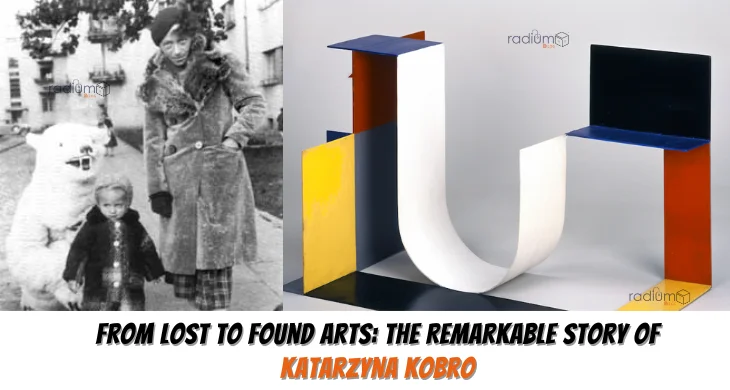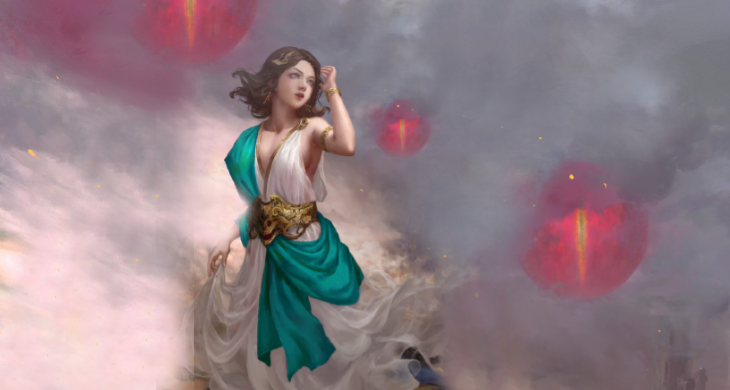Katarzyna Kobro’s legacy as a trailblazer in the Polish avant-garde movement is undeniable, yet her influence was largely obscured for many years. Despite her groundbreaking contributions to modern art, Kobro’s work remained overshadowed by her male counterparts. However, in recent years, there has been a notable resurgence of interest in her life and artistic endeavors. This newfound attention has brought to light the remarkable journey of Kobro, from her early days as a sculptor in the avant-garde circles of Moscow to her pivotal role in shaping the art scene in Poland alongside her husband, Władysław Strzemiński. As the art world reexamines its historical narratives, Kobro’s innovative spatial compositions and commitment to avant-garde principles are receiving the recognition they rightfully deserve.
The Early Years: From Moscow to Poland
Born in Moscow in 1898, Katarzyna Kobro embarked on her artistic journey in the midst of Russia’s rich cultural landscape. Trained at the prestigious Moscow School of Painting, Sculpture, and Architecture, she immersed herself in the avant-garde movements flourishing in the early 20th century. Surrounded by influential figures like Vladimir Tatlin and Kazimir Malevich, Kobro was exposed to groundbreaking artistic ideologies that would shape her own practice.
During her time in Moscow, Kobro delved into various artistic disciplines, exploring sculpture, painting, and architecture. She engaged with the radical experimentation taking place within the avant-garde circles, challenging traditional artistic norms and conventions. This period of artistic exploration and collaboration laid the foundation for Kobro’s innovative approach to artmaking.
In the dynamic atmosphere of pre-revolutionary Russia, Kobro not only honed her technical skills but also developed a keen understanding of the avant-garde principles that would define her later work. Her experiences in Moscow would profoundly influence her artistic vision and set the stage for her remarkable contributions to the world of modern art.
Embracing Avant-Garde: Kobro’s Journey in the Art World
In 1922, Katarzyna Kobro and her husband, Władysław Strzemiński, made a significant move to Poland, where they fully embraced the thriving avant-garde community. This relocation marked a pivotal moment in Kobro’s career, as she immersed herself in the vibrant artistic scene of interwar Poland. Together with Strzemiński, she engaged with various artistic groups and movements, including the influential Grupa a.r., which they co-founded.
Their involvement with Grupa a.r. proved instrumental in shaping Kobro’s artistic philosophy and practice. Through the group’s collaborative endeavors and the publication of manifestoes advocating for avant-garde principles, Kobro found a platform to express her innovative ideas and challenge traditional artistic conventions.
During this period, Kobro’s artistic output flourished as she explored new forms of expression and experimented with innovative techniques. Her collaborations with Strzemiński and other avant-garde artists fueled her creativity and propelled her work to new heights of artistic achievement.
Together, Kobro and Strzemiński played a crucial role in shaping the avant-garde movement in Poland and beyond, leaving an enduring legacy that continues to inspire artists and enthusiasts to this day.
The Birth of Grupa a.r.: A Vanguard of Avant-Garde Art
As founding members of Grupa a.r., Katarzyna Kobro and Władysław Strzemiński played instrumental roles in championing avant-garde abstract art in Poland. Their collaboration within the group marked a significant departure from traditional artistic norms, as they sought to redefine the boundaries of artistic expression.
Through Grupa a.r., Kobro and Strzemiński advocated for radical artistic ideas that challenged conventional notions of art and aesthetics. They believed in the power of abstraction to convey universal truths and emotions, rejecting representational art in favor of pure forms and colors.
The group’s collective efforts laid the groundwork for a new era of artistic innovation and experimentation in Poland. By promoting avant-garde principles and publishing manifestoes that outlined their artistic vision, Kobro and Strzemiński paved the way for a generation of artists to explore new avenues of creativity.
Their advocacy for abstract art sparked a cultural renaissance in Poland, inspiring artists to break free from traditional constraints and embrace the transformative potential of the avant-garde movement. Kobro and Strzemiński’s legacy as pioneers of abstract art continues to resonate in the art world today, serving as a testament to their enduring influence and visionary spirit.
Creating the Sztuki Museum: A Testament to Avant-Garde Art
The establishment of the Sztuki Museum in Łódź by Katarzyna Kobro and Władysław Strzemiński marked a significant milestone in their efforts to preserve and promote avant-garde art. As pioneers of the avant-garde movement in Poland, Kobro and Strzemiński recognized the importance of creating a dedicated space to celebrate and safeguard innovative artistic expressions.
The Sztuki Museum served as a testament to their commitment to preserving avant-garde art for future generations. By curating a collection that included works from European artists they admired, such as Theo van Doesburg, Jean Arp, and El Lissitzky, Kobro and Strzemiński aimed to create a platform for artistic dialogue and exchange.
Their vision transformed the Sztuki Museum into a bastion of modern art, attracting visitors from around the world to experience the groundbreaking works on display. Through their efforts, Kobro and Strzemiński elevated the museum into a cultural institution of international significance, ensuring that the legacy of avant-garde art would endure for years to come.
Today, the Sztuki Museum stands as a testament to their enduring legacy, serving as a beacon of creativity and innovation in the heart of Łódź. As visitors explore its halls, they are invited to immerse themselves in the rich tapestry of avant-garde art, celebrating the visionary spirit of Kobro and Strzemiński.
Kobro’s Artistic Philosophy: Sculpting Space and Form
Katarzyna Kobro’s artistic philosophy was profoundly rooted in her reverence for space and form, which served as the cornerstone of her innovative approach to art. Central to her body of work were her “spatial compositions,” which challenged traditional notions of sculpture and offered viewers a transformative experience.
In Kobro’s spatial compositions, she sought to transcend the confines of conventional artistic boundaries, inviting viewers to embark on a journey of exploration and discovery. Through meticulous attention to detail and a keen understanding of spatial dynamics, Kobro imbued her sculptures with a sense of dynamism and movement, blurring the lines between art and environment.
Her sculptures were not static objects but rather dynamic entities that interacted with the surrounding space, creating a dialogue between form and environment. By seamlessly integrating her works into their surroundings, Kobro invited viewers to engage with sculpture in a deeply immersive way, encouraging them to reconsider their relationship to the physical world.
Kobro’s spatial compositions offered a profound exploration of sculptural aesthetics, challenging viewers to reevaluate their perceptions of art and space. Through her innovative approach, she expanded the boundaries of artistic expression, leaving an indelible mark on the world of modern art.
Spatial Compositions: Kobro’s Masterpieces
Katarzyna Kobro’s Spatial Compositions stand as the pinnacle of her artistic vision, representing a groundbreaking fusion of architectural principles and sculptural forms. These iconic sculptures, which emerged during her most prolific period between 1922 and 1939, challenged traditional notions of art and space, offering viewers a transformative aesthetic experience.
At the core of Kobro’s Spatial Compositions was her innovative approach to form and structure. By integrating architectural elements such as lines, planes, and geometric shapes into her sculptures, Kobro sought to blur the distinction between art and the surrounding environment. The result was a series of dynamic, multidimensional works that defied categorization and captivated audiences with their sheer ingenuity.
What set Kobro’s Spatial Compositions apart was their ability to engage with space in a truly immersive manner. Unlike traditional sculptures that exist as standalone objects, Kobro’s works interacted with their surroundings, creating a sense of fluidity and movement. This dynamic interaction invited viewers to explore the relationship between form and space, challenging them to reconsider their perception of sculpture.
Through her Spatial Compositions, Kobro pushed the boundaries of artistic expression, paving the way for a new era of sculptural innovation. Her legacy continues to inspire contemporary artists and enthusiasts alike, underscoring the enduring relevance of her groundbreaking work.
Post-War Life and Legacy: Honoring Kobro’s Contribution
In the turbulent aftermath of World War II, Katarzyna Kobro confronted numerous challenges that tested her resilience and resolve. Despite the hardships she endured, Kobro’s unwavering commitment to art and education remained steadfast, serving as a beacon of hope for future generations of artists.
Following the war, Kobro faced significant obstacles, including financial hardship and societal upheaval. Denied membership to the Association of Polish Artists in 1946, she found herself marginalized within the artistic community, unable to sustain herself solely through her art. Despite these setbacks, Kobro persevered, seeking alternative avenues to support herself and her family.
Undeterred by adversity, Kobro channeled her creative energy into new ventures, embracing opportunities in textile art and education. As a textile artist, she crafted intricate felt toys, showcasing her versatility and ingenuity in adapting to changing circumstances. Additionally, Kobro dedicated herself to teaching Russian and painting, sharing her passion for art with eager students.
Throughout her life, Kobro remained committed to fostering artistic expression and intellectual curiosity. Her legacy lives on in the countless individuals she inspired, embodying the transformative power of creativity in the face of adversity. Today, her pioneering spirit continues to resonate with artists and enthusiasts worldwide, serving as a testament to the enduring impact of her remarkable journey.
Reclaiming Recognition: Kobro’s Revival in Contemporary Art
Katarzyna Kobro’s once-overlooked contributions have undergone a remarkable resurgence, capturing the attention of art enthusiasts and scholars alike. In recent years, major retrospectives and exhibitions have illuminated Kobro’s trailblazing journey, shedding light on her innovative approach to sculpture and spatial composition.
These retrospective exhibitions serve as a testament to Kobro’s enduring legacy, offering viewers a comprehensive overview of her groundbreaking work. From her pioneering “spatial compositions” to her collaborative efforts with artistic groups like Grupa a.r., Kobro’s influence permeates the contemporary art landscape.
At the forefront of this revival is a growing recognition of Kobro’s role as a trailblazer in 20th-century art. Her ability to transcend traditional artistic boundaries and explore the interplay between form and space has earned her a revered place in the annals of art history.
Today, Kobro’s legacy resonates through the halls of modern art institutions worldwide, inspiring a new generation of artists to push the boundaries of creative expression. As her influence continues to proliferate, Kobro’s status as a visionary figure in modern art remains firmly cemented, ensuring that her contributions endure for generations to come.
Conclusion
As we reflect on the life and art of Katarzyna Kobro, we pay homage to her groundbreaking contributions to the world of modern art. Through her innovative spirit and unwavering dedication, she continues to inspire artists and enthusiasts alike, leaving an indelible imprint on the canvas of art history.




